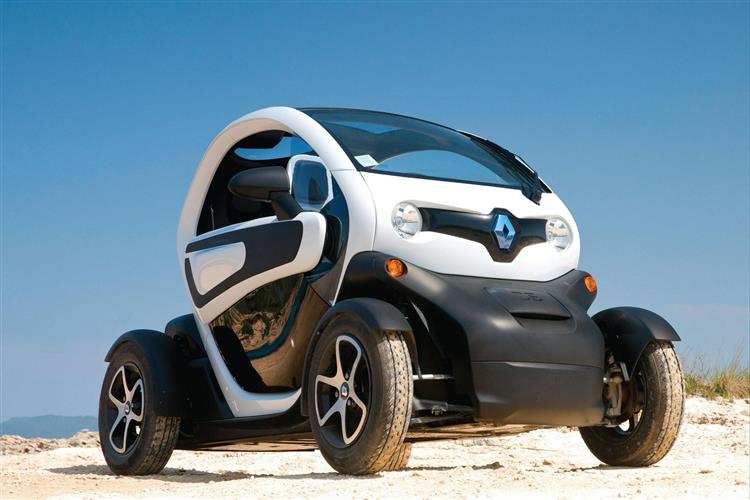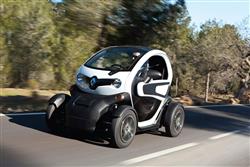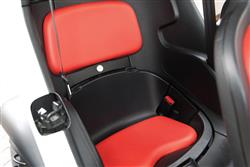This is a sample, showing 30 seconds of each section.
FRENCH CONNECTION (some text hidden) SECTIONED_new_RenaultTwizy_2012
By Jonathan Crouch
Introductionword count: 81
Defining Renault's Twizy isn't easy. It has four wheels - but isn't really a car. There's space for two - but only one front seat. There's a roof - but it's open at the sides. And it'll match the flow of traffic - but won't use an engine to do so. This was Renault's electric technology at its most extreme, offering perhaps the ultimate answer for city motoring. Perhaps even the kind of second car that all future families should have.
Modelsword count: 2
2-door citycar
Historyword count: 345
To be sustainable for the future of mankind, the automobile has to change. Maybe not change as much was is the case here - but all the same, it has to change. This is Renault's Twizy, automotive transport, but not as we know it. The name is a supposed blend of the words 'two' and 'easy', the badge for this innovative French brand's solution to the issue of how people should get around their urban environment and complete the short, everyday, one or two-person journeys we all make that, if we're honest, don't really require a proper car. You see, this isn't really a proper car, even though it has four wheels and a steering wheel. As the looks suggest, it's actually a cross between a car and a scooter, something the motor industry calls a 'heavy quadricycle', the name defining a four-wheeled vehicle that weighs no more than 650kgs with a power output that's usually less than 20bhp. Not the kind of thing the average person would feel comfortable about driving. But is this? You might be surprised. With the Twizy, launched in 2012, we were offered an entry-level point for a range of electric vehicles in which Renault by then had invested over £2.5 billion in - and it was certainly a varied one. The supermini ZOE for small families, the Fluence ZE (shortly afterwards deleted) for larger ones and the Kangoo ZE van for eco-minded businesses. All these vehicles had to try and justify their existence as alternatives to normal combustion engine models. The Twizy's advantage was that it didn't have to do so, for so unique, so outlandish was it that no conventional rivals existed. So you'll either like it or you won't. One thing's for certain: our cities will be crammed with vehicles like this in all our EV futures. But the market wasn't quite ready for an EV as outlandish as this in the 21st century's second decade, so after years of slow sales, the Twizy was finally deleted from the brand's line-up in 2021 - and not replaced.
What You Getword count: 451
The Twizy's styling looked like nothing we had ever seen before. The wheels flung out at each corner, the two seats in tandem and the way the wedge-shaped passenger cell sits nestled into the chassis - all of it marks the Twizy down as something resolutely unconventional. Getting in is relatively straightforward. Most new owners got this model with the optional flip-up doors fitted and they're almost fingertip light on their gas struts but when in place, still only cover half the door height, partly explaining why, once you're seated behind the wheel, there's a rather odd arrangement of twin seat belts to contend with. The first is a normal diagonal inertia reel belt, while the second loops over your right arm. At first you think you'll feel trussed up like a Christmas turkey, but after a while you stop noticing them. Thanks to a decent amount of front headroom and plenty of fore and aft adjustment on the front seat, the driving position is comfortable, even though the steering wheel is fixed into position. Through it, you view a clear and simple digital instrumentation display showing speed, battery charge and range. The only buttons are for the hazard warning lights and the three that respectively switch you between Drive, Reverse and Neutral. Forward visibility's excellent, though the lack of a rear glazed panel seems odd, explaining why Renault feels the need to offer optional parking sensors on something this small. If you get a car with the flip-up doors, they'll come mounted with door mirrors that would otherwise be fixed to the chassis frame instead. Behind the driver, the single rear seat with its ordinary three-point belt is fixed in a single position and requires a nimbleness of limb when it comes to getting in and out. Once in situ, it's necessary to sit with your legs splayed around the front seat, though that's actually a lot more comfortable than it sounds. You don't, you see, have the knee room seatback restriction you'd get in the back of a conventional car, which means that this 2.3-metre-long Twizy actually provides a more comfortable rear berth for a six foot adult than would a 4.5-metre-long Ford Focus. Renault did a pretty good job of endowing the Twizy with a degree of practicality. There are two glove boxes incorporated into the dashboard and one of them's lockable, plus there's a lockable 31-litre trunk at the back which can easily take waterproofs or a change of clothes. You can also buy rear storage nets and a 50-litre rear storage bag. Which might even make this thing a viable proposition for a relatively restrained weekly shop, providing you don't mind doing it on your own.
To see the full road test text contact us on 0330 0020 227
Pictures (high res disabled)

.jpg)
|
.jpg)
|
.jpg)
| |||
.jpg)
|

|
.jpg)
| |||
.jpg)
|
.jpg)
|

|
Scoring (subset of scores)
Category: Hybrid, Plug-in, Electric & Hydrogen
| Performance | |
| Handling | |
| Comfort | |
| Space | |
| Styling, Build, Value, Equipment, Depreciation, Handling, Insurance and Total scores are available with our full data feed. | |



